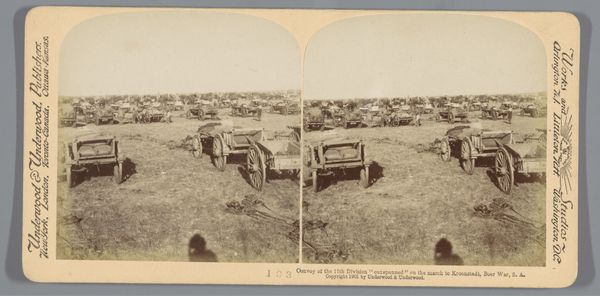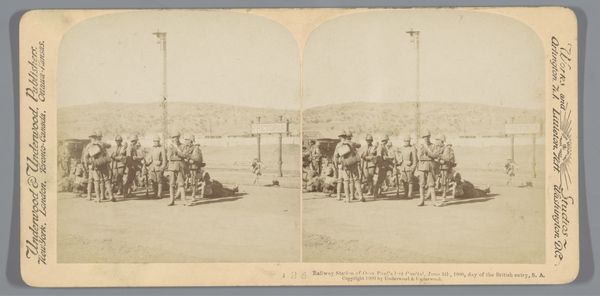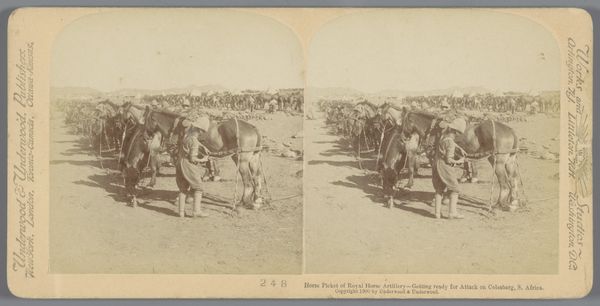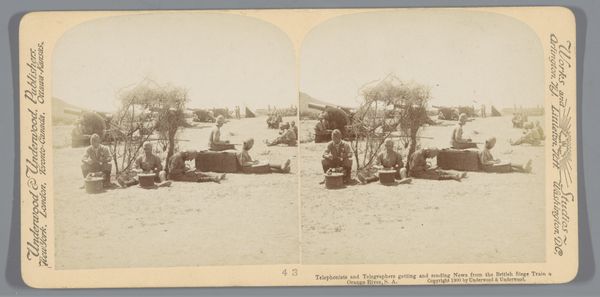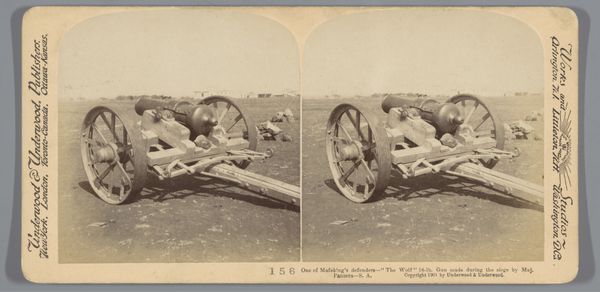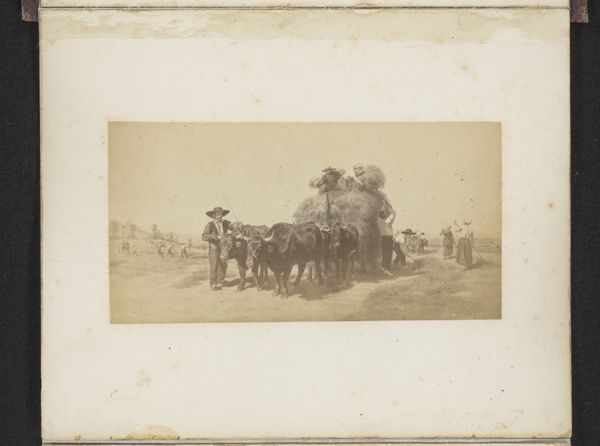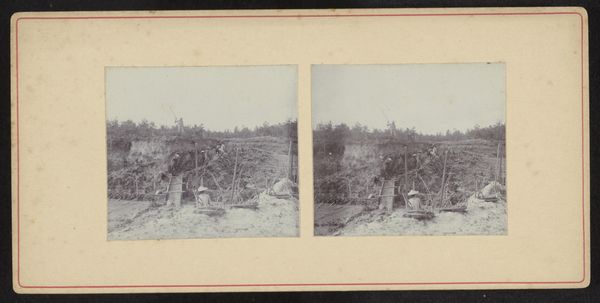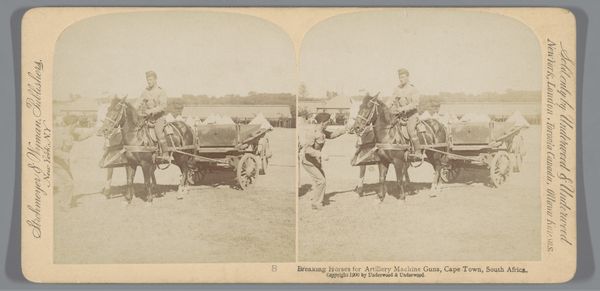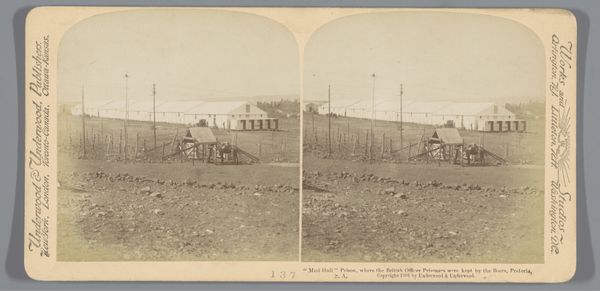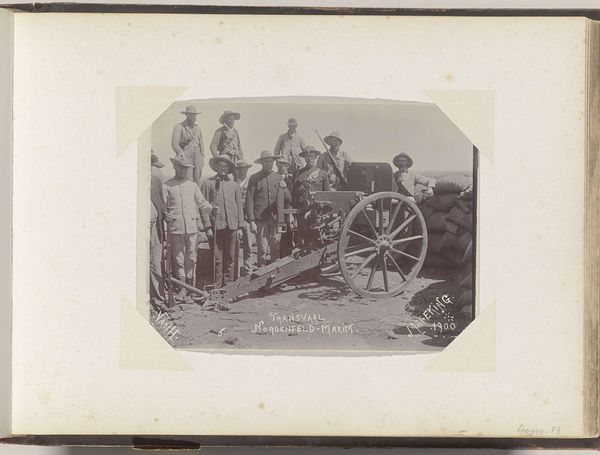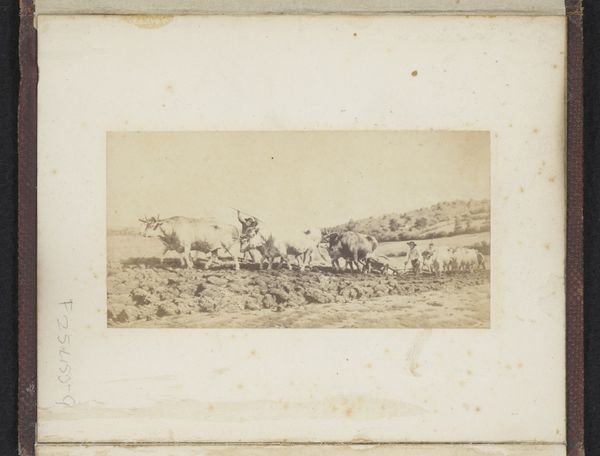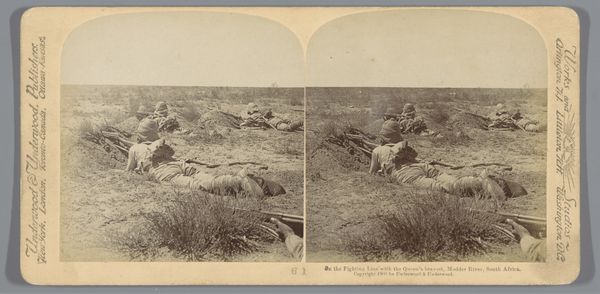
Gezicht op karren met voorraad onderweg naar het leger van Lord Roberts (Frederick Sleigh Roberts) in Pretoria, Zuid-Afrika 1901
0:00
0:00
print, photography, gelatin-silver-print
# print
#
landscape
#
photography
#
coloured pencil
#
gelatin-silver-print
#
history-painting
Dimensions: height 88 mm, width 178 mm
Copyright: Rijks Museum: Open Domain
Curator: This gelatin silver print, taken around 1901, presents us with "A view of wagons with supplies on their way to Lord Robert's army in Pretoria, South Africa." Editor: The monochrome palette creates an overwhelming impression of dryness, dust, and hardship. You can almost feel the sun beating down on that endless horizon. Curator: Precisely. The historical context is crucial. Lord Roberts commanded British forces during the Second Boer War. These supplies were vital for maintaining the colonial military presence and power in a landscape already fraught with tension and exploitation. Editor: I am drawn to the symbol of the wheel, prominently featured. On one hand, the wagons show forward momentum and advancement, but on the other, they also depict the cyclical nature of conflict—supply lines, unending needs and demands, constant repetition. Curator: That’s an incisive reading. Consider also the weight implied in the image—the supplies, the heavy hand of colonialism—burdening both the landscape and its people. It implicitly visualizes a network of power that extracts and consumes. Editor: Yes, and there's the man standing by the wagon, seemingly dwarfed. Is he merely a worker, or a figure representing something larger? I'm struck by the humanity—or lack thereof—within the composition; the scale is tilted towards the mechanical necessities of war rather than the individuals impacted by it. Curator: I appreciate that focus on the human element amid the grand scale of imperial operation. To what extent can individuals maintain their agency when facing institutional forces like those shown here? Are they active agents, complicit, or caught in historical inevitability? Editor: It begs a critical reflection about the nature of power, really. Beyond any obvious propaganda, the very composition is communicating something significant about the individual’s role in such circumstances. It gives us pause to consider all that. Curator: Indeed, stepping back, we can begin to think about power structures, colonial administration, and the sheer mechanics of warfare – issues as relevant now as then. Editor: Exactly! It’s images like this that remind us visual languages have layers upon layers.
Comments
No comments
Be the first to comment and join the conversation on the ultimate creative platform.
